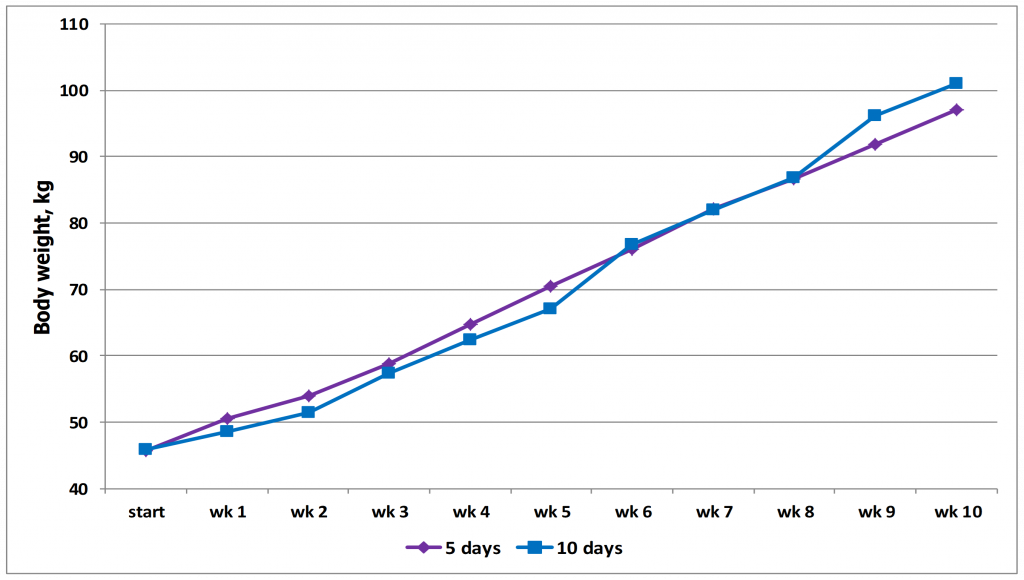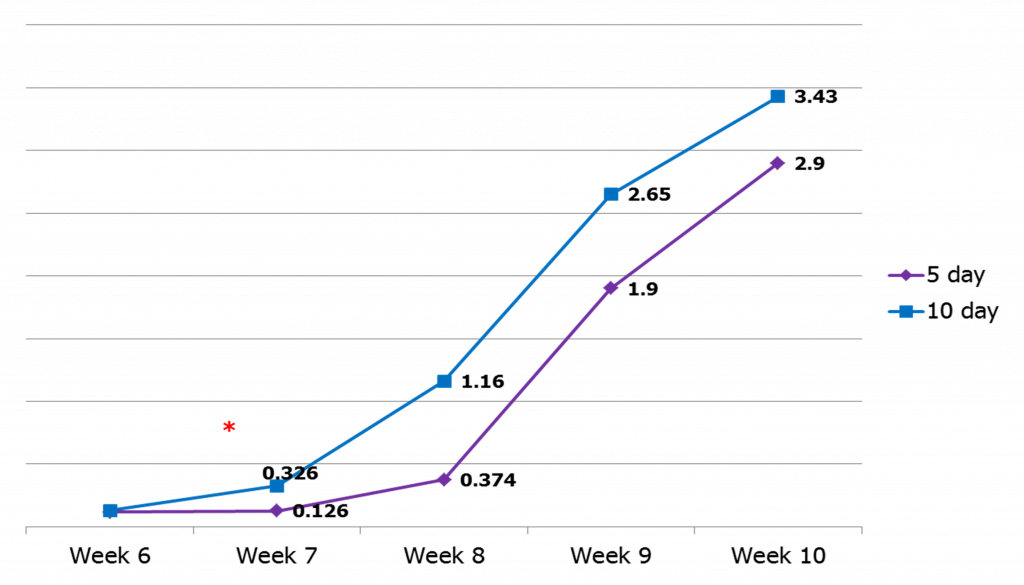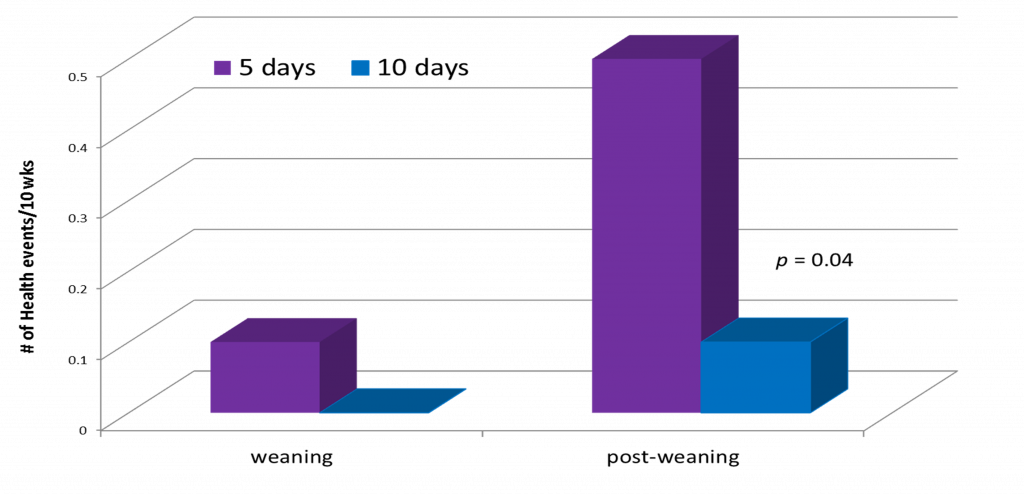Healthy Calf Conference
Follow to stay up-to-date on all Healthy Calf Conference updates. Speaker announcements, sponsorship information, registration announcements, and more.
By Kathleen Shore, M.Sc., Manager of Ruminant Nutrition, Grand Valley Fortifiers
When it comes to weaning calves, doing it well can make a big difference in terms of calf health and growth. If weaning is poorly done, the time, effort, and money spent toward the calf quickly becomes a loss as they struggle to maintain their bodyweight and continue to grow. Eventually they will catch up, but the cost of that time is never recovered. Whether the calf is destined for the milking line, a feedlot, or the veal sector, the science is all the same at weaning – a lot of change = a lot of stress = a growth lag.
Weaning should be a process that is standardized but also adjustable for the size of the calf. Smaller calves should not be moved on to the next stage if they are not ready. The approach to weaning should be slow and consistent. A lot of things can be less than perfect in calf rearing but consistency is key for optimal growth and health of the calf!
The goal of weaning is to ensure a smooth transition from that pre-ruminant stage to the ruminant stage where other feeds can be introduced, and a rumen microbial environment is being established. The advantage of a smooth transition leads to decreased morbidity and mortality and increases gain. For a dairy calf, it has been found that one kilogram of preweaning average dairy gain (ADG) = 1,540 kg of milk during first lactation. That is a wonderful reason to spend time feeding good quality milk or milk replacer to that young calf.
Where it tends to slow a calf down is the abrupt weaning stage where feed and/or housing and/or pen mates are changed and with each change/stress the calf shifts their nutrition from growth to maintenance and stress mitigation. It can be overwhelming to work toward a better situation with full barns and limited space. Keep in mind that small changes over time are better than waiting to reach a perfect situation. Keeping calves in similar groups is the first step – they are comfortable with the animals they know, even in separate pens they will recognize their vocalizations. Small but steady does win the race!
Feeding is a learned behaviour
When animals are young, we begin to teach them what we expect from them – if they are with the dam as in the case of many beef calves, they will nurse but they will also need to learn where to find water, and what creep feed is and/or where does the dam eat. In the case of calves fed away from the dam they learn what to eat/drink and they will learn when to expect it.
When it comes to weaning, this process is a retraining. Now they need to adjust what they are eating (forcing them to adjust what they are eating at the same time becomes a lot of change). Given the time, they will learn and drive on. If calves are in a competitive environment where they do have to fight for feed this is the behaviour that will remain with them through all stages of their production. We refer to that fight for feed as “slug feeding” where they attack the feed quickly. This leads to persistent digestive issues and poor feed efficiency – a cost not often realized because the opportunity to do better comes from giving animals more space and potentially more feed. Improvements in feed efficiency can make a big difference in terms of dollars per animal and for beef the time to finish can be reduced nicely.
Step down weaning
This is a gradual reduction of access to milk (or the dam) to initiate the calf’s reflex to eat more grain and some forage if offered. A trial run using bull calves and feeding them milk replacer for a total of 60 days was initiated whereby the calves were housed individually and the milk program was the same for all calves (offering up to nine litres per day at 150 g of milk replacer powder per litre of water). The only difference was some calves were weaned over five days and some were weaned over 10 days. Figure 1 shows the differences while on milk and then at week eight they were all weaned and you can see the calves pulled ahead very quickly when they were given 10 days to wean (no calves were moved at this time).

The weaning process here was to reduce the milk amount a little bit each day so over 10 days it was approximately 10 per cent and over five days reduction was approximately 20 per cent each day. The milk concentration remained the same and the number of milk meals (two in this case) remained the same. During this time, weaning through post-weaning, grain intake was measured. Figure 2 shows you that the calves allowed a longer time to wean ate more grain earlier on and continued to do so thus increasing in bodyweight faster than their counterparts only weaned over five days.

The last measurement through this trial was number of health events for these two groups of calves. Figure 3 demonstrates that calves weaned over 10 days had less events – an indication that there was less stress driving an immune event.

While this data applies to calves housed away from the dam, those calves that remain with the dam will show the same signs of stress if abruptly removed and weaned. Considering an approach where calves are separated and can still see the dams but have access to their own feed and water in an area that they can safely run around will improve ADG by reducing the stress that comes from many changes all at once.
Improving things in the calf barn
You can do a lot of things less than perfectly in the calf barn but do them consistently and the calf will do better then if you are constantly changing the approach. This is a funny message but very true – no barn is perfect; no feeder is perfect but approach the calf gently and calmly and things tend to work well. If you are going to change from whole milk to milk replacer, try to do this once the calf is weaned and then make the change for all incoming calves. If you want to improve disease presence in the barn do not go from all group housing to individual housing if calves are used to being together – instead look at washing more frequently or providing hay to the calves so they chew on it and not each other or pens. Small changes over time and letting the calves adjust will always be far more successful for the calf and less frustrating for the feeder.
Take home message
References available upon request.
Follow to stay up-to-date on all Healthy Calf Conference updates. Speaker announcements, sponsorship information, registration announcements, and more.
The Codes of Practice are nationally developed guidelines for the care and handling of farm animals. They serve as our national understanding of animal care requirements and recommended practices.